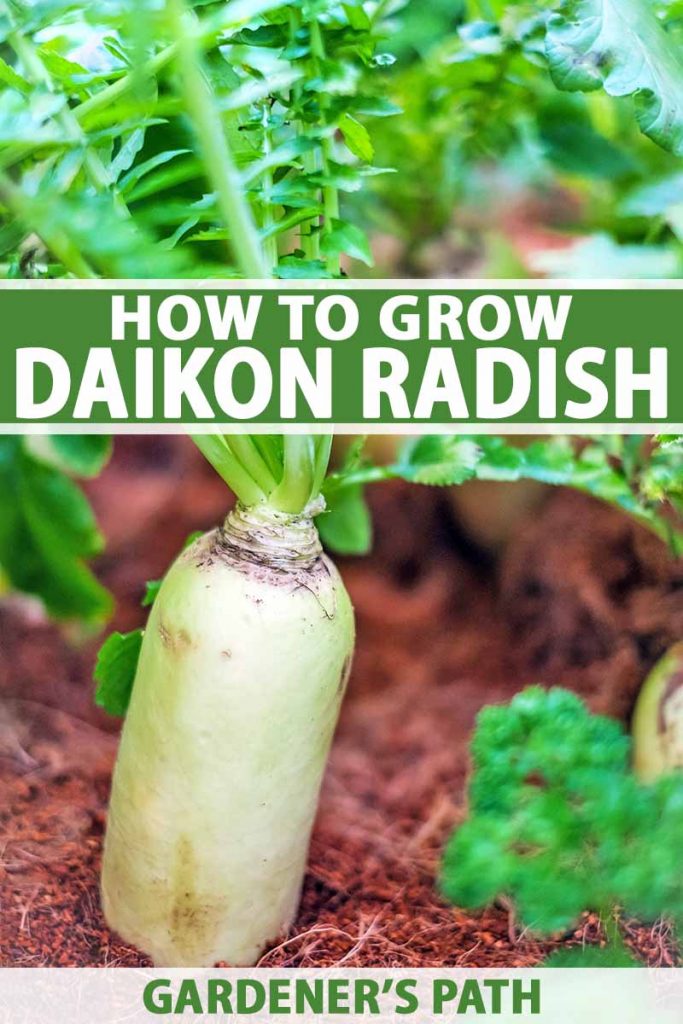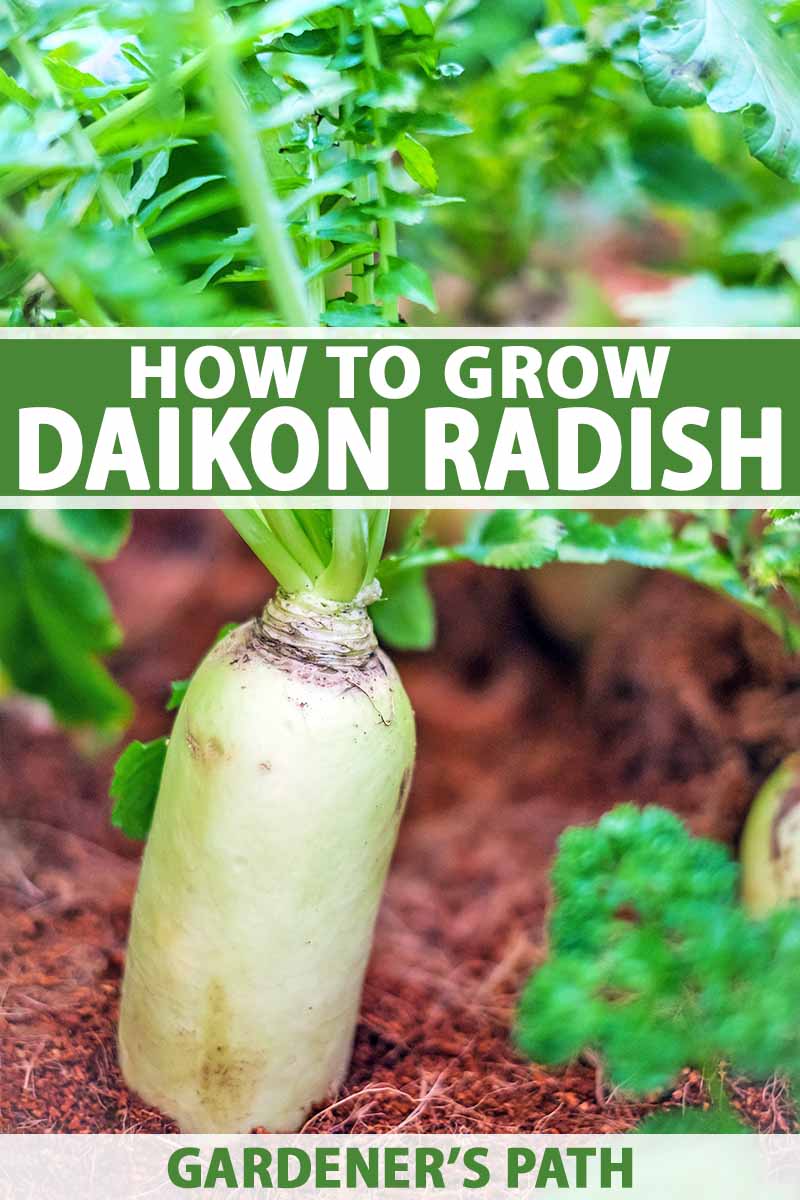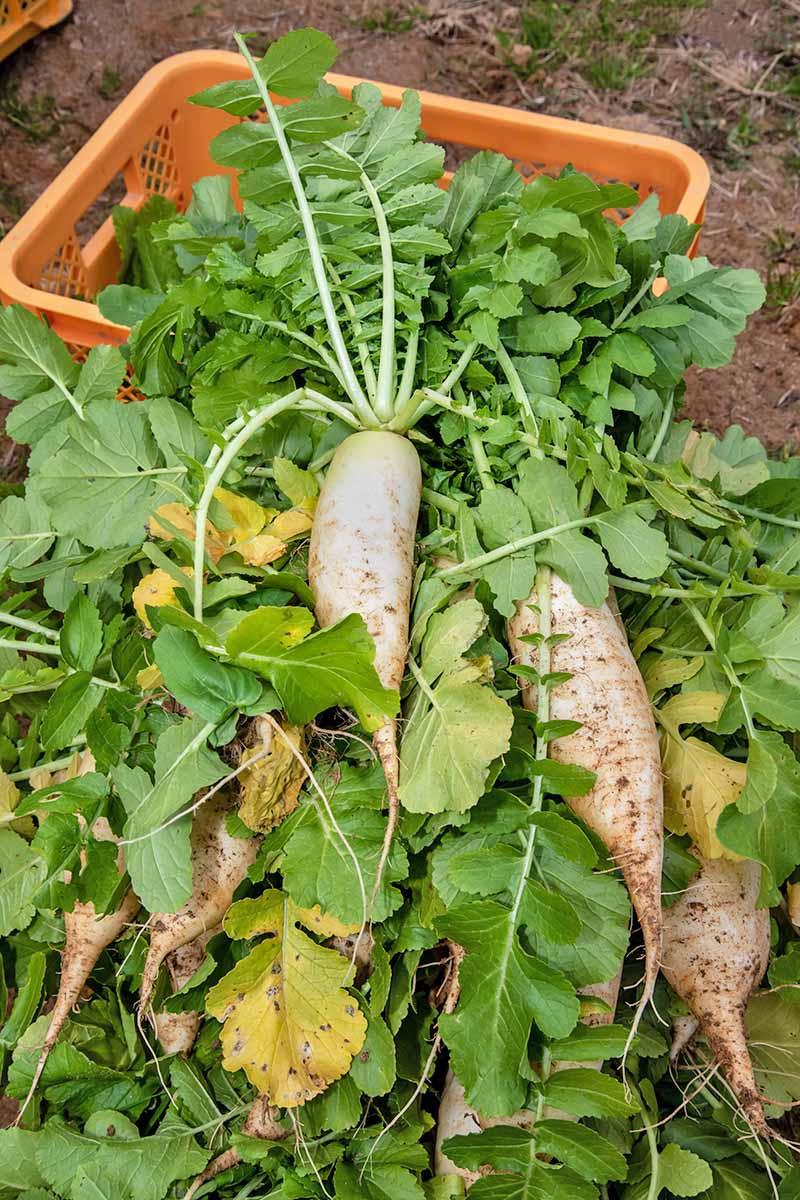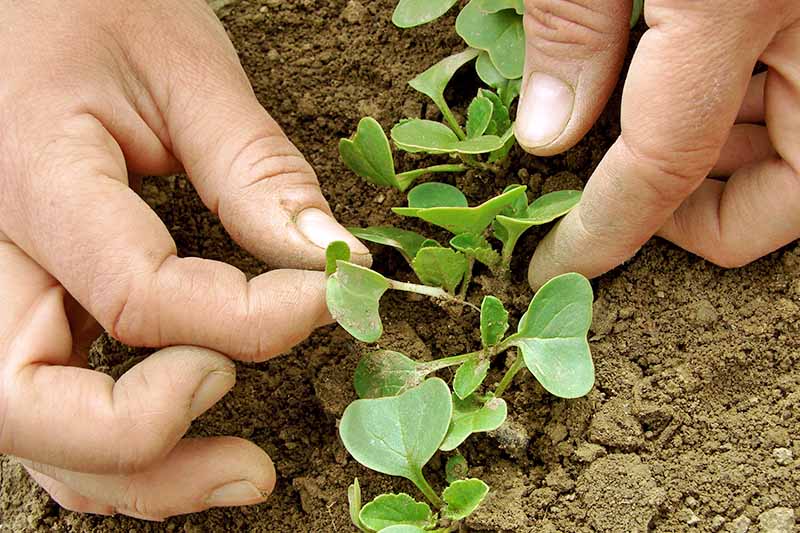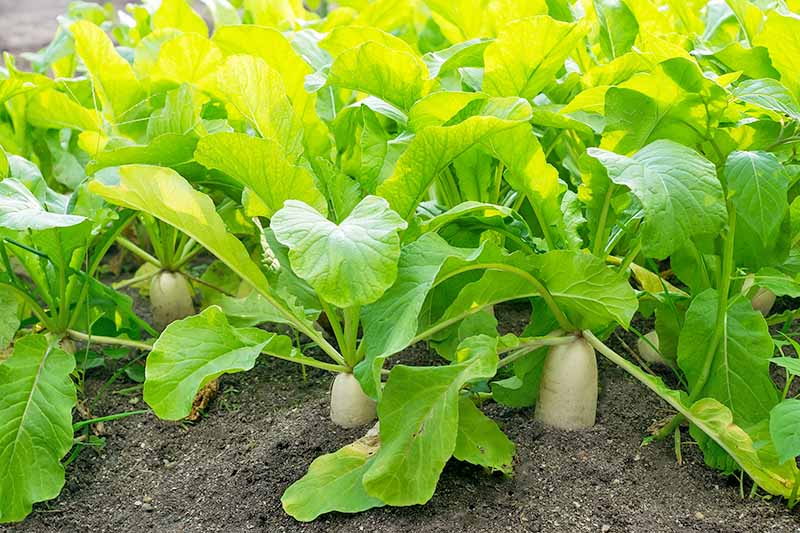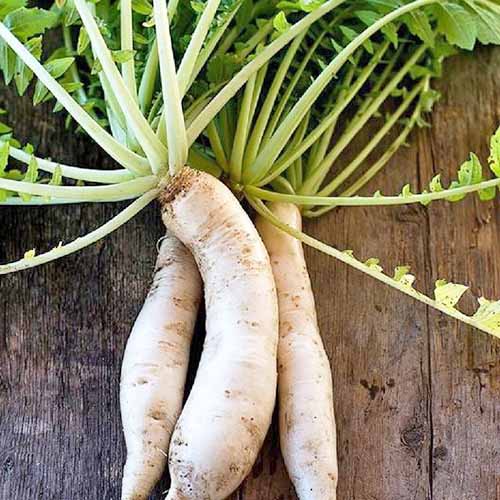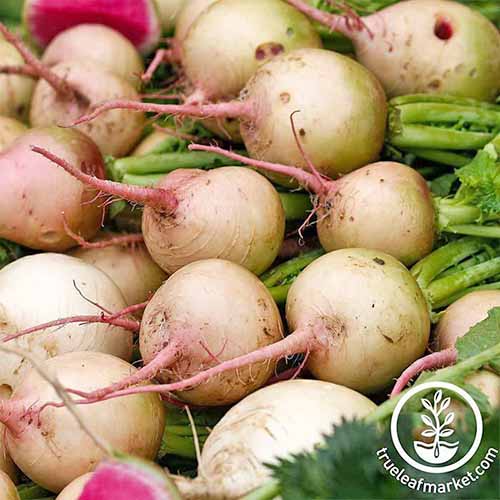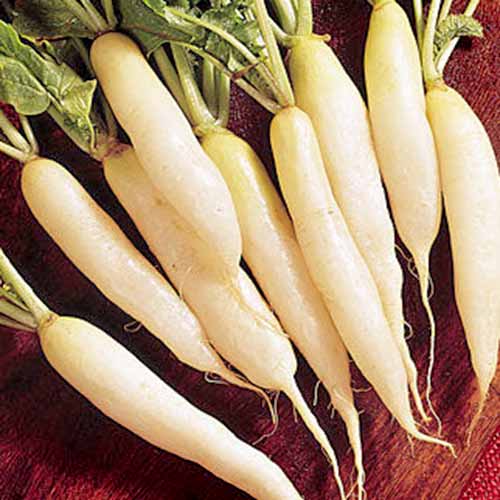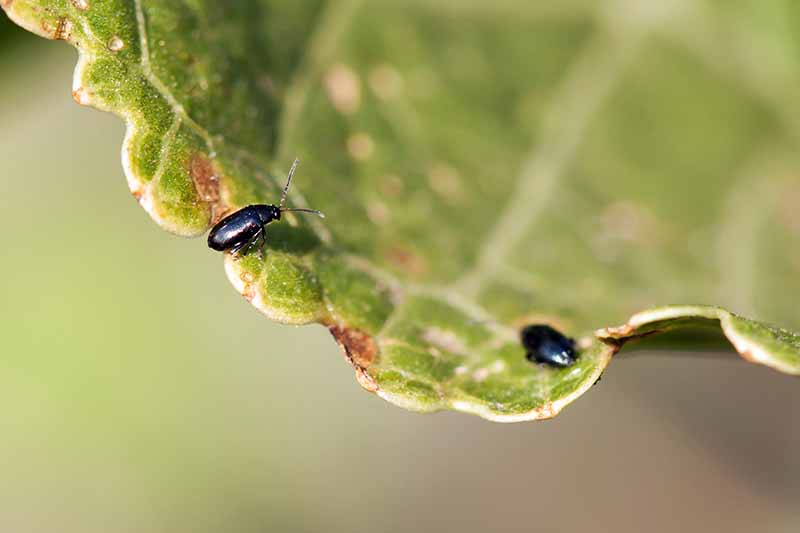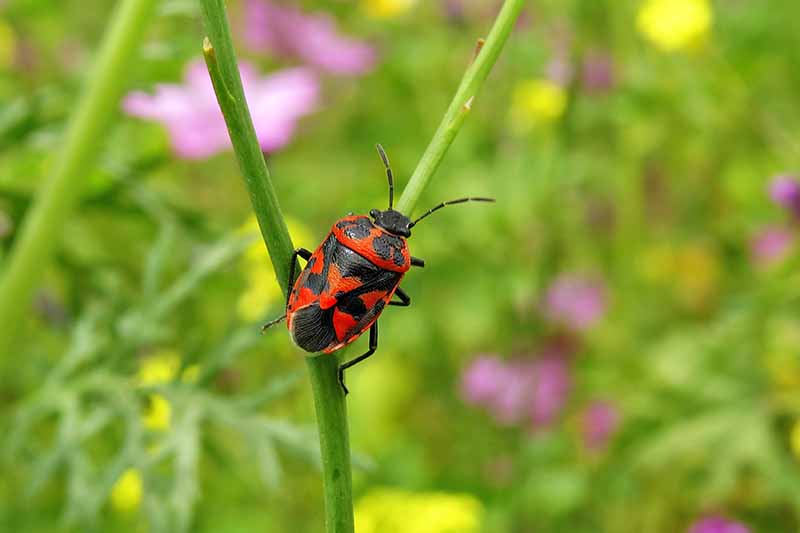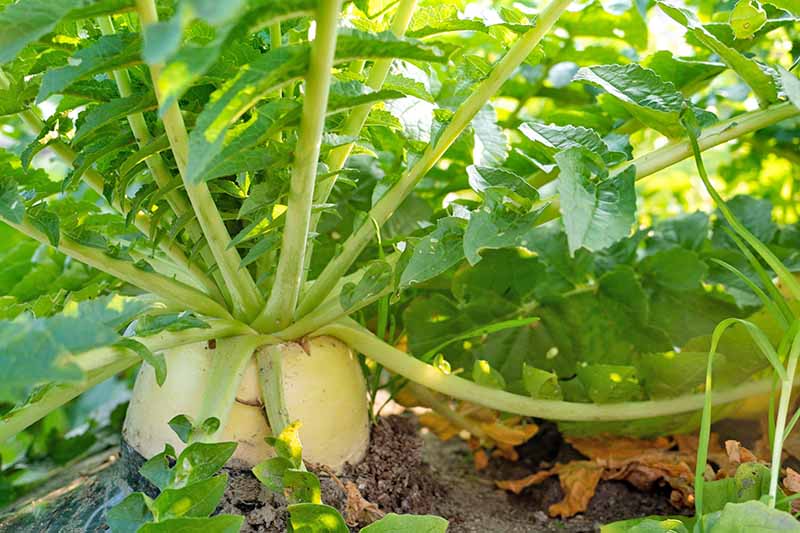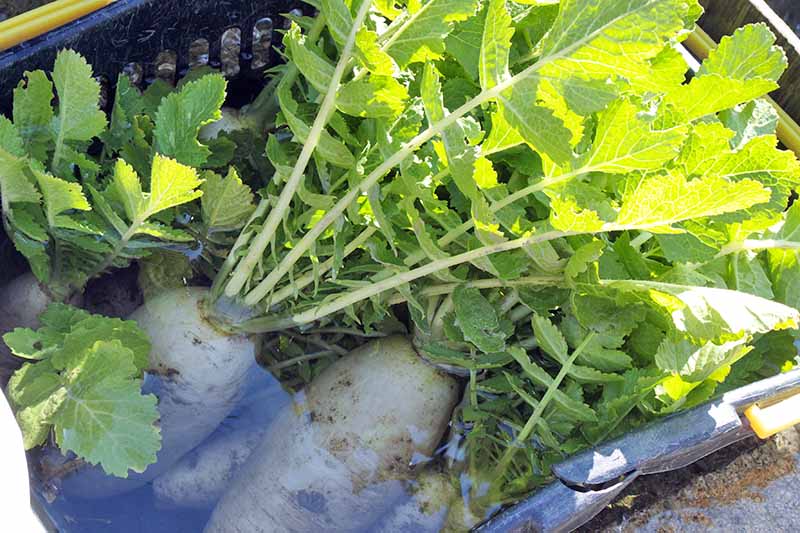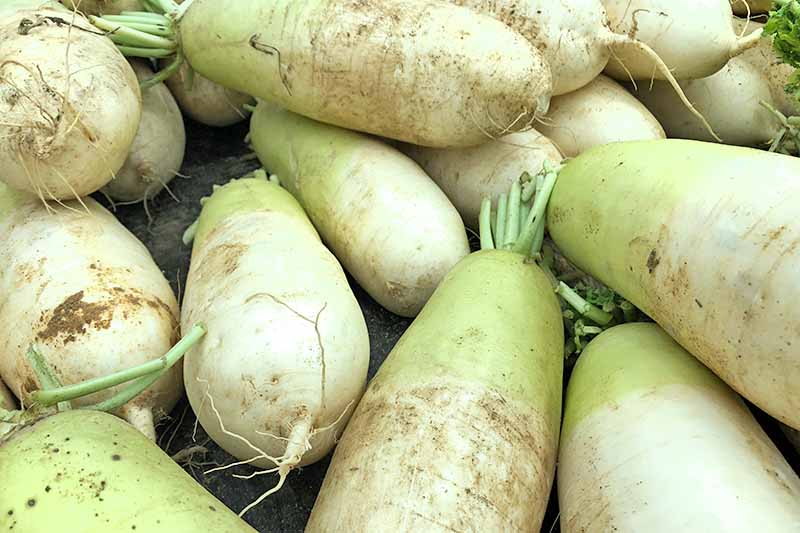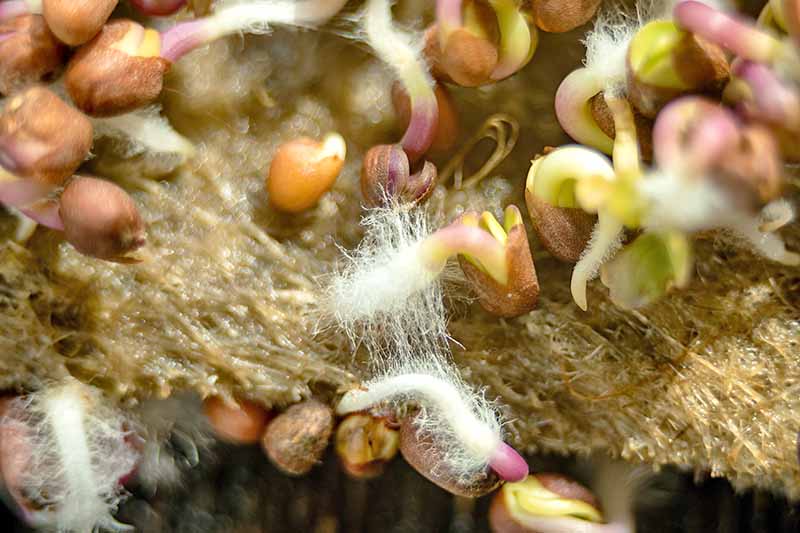We link to vendors to help you find relevant products. If you buy from one of our links, we may earn a commission.
What Is Daikon?
Daikon is a specific type of radish characterized by its large root. It’s no surprise that its name comes from two Japanese words: dai, which means large, and kon, which means root.
It also has a longer date to maturity than other types of radish, which makes sense for its larger size. Like all radishes, it is a member of the Brassicaceae family. Daikon also goes by other names including white radish, Chinese radish, and Japanese radish.
Cultivation and History
Although daikon is widely grown and consumed throughout East Asia, it is thought to have originated in the Mediterranean. However, these radishes soon made their way to countries including China, Japan, and Korea sometime during the third or fourth century.
Since then, they have been a mainstay in certain Asian cuisines, appearing in dishes including stews, stir fries, and ferments. Daikon is a winter radish, meaning it grows best when it is allowed to mature in colder weather. Therefore, it is typically planted in mid-summer to early fall, depending on your growing zone. These radishes are often used as cover crops to loosen soil and reduce erosion. This has given them the name tillage radishes.
How to Sow
As with other radishes, these are best grown via direct seeding. The date when you should plant seeds depends on your growing zone. Daikon radishes can be grown in USDA Hardiness Zones 2-11.
Aim to sow seeds around two months before your predicted first frost date. This will ensure plants mature in time for harvest. No matter where you are located, sow one seed every inch in rows 12-18 inches apart. Seeds should be planted at a depth of 1/4 to 1/2 inch.
How to Grow
As mentioned above, this crop is best grown via direct seeding. Before you plant the seeds, you want to make sure you prepare your soil. Daikon radishes grow best in soil with a pH of 5.8-6.8. Although their roots can loosen compacted soil, they grow best where soil is already loose. If your soil is compacted, consider loosening it with a broadfork before planting. Since you will be harvesting the roots, avoid applying excessive amounts of nitrogen to the soil. Too much nitrogen will grow large greens, but small roots. Choose a full sun to partial shade location for best results.
Once you plant your seeds, make sure you keep the soil moist, and they will germinate within a few days. Within a week of germination, thin seedlings to 4-6 inches apart. Plants will mature in 40-70 days, depending on the variety. Don’t fret if part of the root is visible above ground; this is normal.
Water should be provided every few days if rain doesn’t fall. You are aiming for moist, but not wet, soil.
Harvesting
Daikon radishes can be harvested once they meet their date of maturity. Check your seed packets for recommendations. The difference between these types is in their root shape. Some are rounded with nearly the same circumference from top to root, some have more of a narrow and tapered shape similar to a carrot, and others are nearly spherical. Cultivars also vary in root color, with most being some combination of white and light green.
Japanese Minowase
This heirloom variety produces oblong roots that can grow up to two feet in length. The roots are all white, and can be stored for multiple weeks after harvest.
‘Japanese Minowase’ Ready to eat in 45-60 days, the ‘Japanese Minowase’ cultivar is also known for being adaptable to sun or shade. Find seeds at Eden Brothers.
Long
The ‘Long’ cultivar has white tapered roots with light green tops.
‘Long’ This type can grow up to 14 inches in length. Expect about 60 days to maturity. It can be grown in the spring as well as in the fall. Find seeds at Burpee.
Red
This variety has oblong roots that grow 5-8 inches long. The exterior of the roots is bright red while the interior ranges from white to pink.
‘Red‘ ‘Red’ is an heirloom cultivar that you can expect to be ready to harvest in as little as 30 days. Find seeds at True Leaf Market.
Watermelon
An heirloom variety of daikon with a round bulb, this type is the star of the show when added to any salad or platter of crudités.
‘Watermelon’ White or light green on the outside, slicing into these roots reveals bright pink flesh that is reminiscent of a watermelon. These can be harvested when they reach golf ball size, or leave them in the ground longer for whopping grapefruit-sized roots. Expect 30-80 days to harvest. Seeds are available from True Leaf Market.
White Icicle
Icicle radishes form white, narrow, tapered roots that reach about 5 inches in length at maturity. And this cultivar grows quickly – you can expect a harvest in just 27-35 days!
‘White Icicle‘ With a mildly pungent flavor, Burpee rates this cultivar as “Best in Class.” Get your seeds now, available from Burpee.
Managing Pests and Disease
Pests generally don’t bother these radishes too much, however, there are some that still pop up occasionally.
Insects
Different types of insects may go after the leaves as well as the roots. Luckily, they don’t usually cause too much damage.
Flea Beetle
Flea beetles are little bugs that go after the leaves of your plants. If you see small holes in your leaves, take a closer look. You will probably see the beetles themselves, only 1/16-1/4 inch in size.
Read more about flea beetles and how to control them here.
Harlequin Bug
These bugs may look pretty, but they can really do some damage to your crops. They are orange and black with shield-shaped bodies, and they feed on leafy greens. If you only see a few bugs on your plants, simply pick them off and place them in some soapy water.
If these pests take over your crop and require more intense intervention, they can be treated with a spray of neem oil, pyrethin, or insecticidal soap.
Cabbage Maggot
If you pull up your daikon only to discover that they are ridden with tiny channels, the cabbage maggot is likely to blame. These pests are the juvenile form of small flies. To prevent infestation by these insect pests, consider employing a cover cropping routine. Another method to keep pests at bay is by using floating row covers to exclude insects from your crops. Read more about cabbage maggot control here.
Disease
All parts of the daikon plant are susceptible to disease, both above and belowground. Again, these issues won’t usually prove to be too much of a problem for your crop.
Septoria Leaf Spot
If you see yellow spots with gray centers on your radish leaves, they are probably infected with this fungus. The best treatment is to remove infected leaves and/or plants. This will stop the spread of the fungus.
Black Root Rot
This fungus goes after your plants’ roots, turning pieces black in color and distorted in shape. If it affects small seedlings, the plants may die. Unfortunately, this disease cannot be treated once it is spotted on your plants. However, it can be prevented using cultural methods. Don’t over water your crops and make sure they are planted in soil with good drainage. Another way to prevent this disease is by practicing crop rotation. Since this fungus affects multiple Brassica species, make sure you don’t grow brassicas repeatedly in the same area.
Keep in mind that although this type of radish has more of a capacity to grow large while maintaining quality than your traditional radish varieties, they can still become pithy and spongy if they are left to grow too big. Be sure to harvest before this happens. If hit with hard frosts, the radishes will become spongy or die. However, the time to harvest can be extended by protecting plants with floating row covers.
Varieties with long and slender roots are fragile and susceptible to snapping. You can prevent them from breaking by loosening the soil with a pitchfork, broadfork, or shovel. Once your soil is adequately loose, grab the leaves where they meet the tops of the roots and gently pull. Now’s the moment when you get to see just how big your daikon have grown!
Once the plants are pulled from the ground, cut off the leaves at their base. With the leaves removed, the roots can be stored for multiple weeks under the right conditions. To increase the storage life of your radishes, avoid washing the roots or leaves until you are ready to use them.
Daikon is best stored in a cold, moist environment. Therefore, the best way to store your harvest is to place the roots in the refrigerator with a damp paper towel or cloth. You can wrap or cover them in the towel; the important thing is that you are providing a humid environment. Leaves can be stored in a zip-top plastic bag in the crisper drawer of your refrigerator for a few days.
Preserving
These radishes are often fermented complete with their edible greens to be eaten as a type of pickle. They are also used as a component of Napa cabbage-based kimchi. Fermenting is a simple process that only requires three main things: salt, water, and time. You can read more about fermented foods on our sister site, Foodal.
Recipes and Cooking Ideas
Daikon radish is a versatile crop in the kitchen. It can be eaten raw or cooked, and all parts of the plant can be consumed. You do not need to peel this vegetable, though some people choose to do so. One simple way to eat daikon is to slice it up raw into discs that can be dipped in hummus or ranch dressing.
Another great way to eat daikon is to dice it into ½-inch cubes and then saute them in oil with garlic and ginger for a few minutes. Remove from the heat and toss with rice noodles, soy sauce, sesame oil, and your favorite fresh diced hot pepper or hot pepper flakes. Due to their rough texture, the leaves are best enjoyed cooked via methods including sauteing and steaming. They make a great addition to Thai-inspired coconut curries.
Daikon sprouts can also be enjoyed in salads and sandwiches. See our article on sprouts and microgreens for more information to grow your own.
Quick Reference Growing Guide
Grow Some Giant Radishes
Now that you know how to plant and grow these large radishes, it’s time to add them to your fall garden. You’ll be impressed with their size and how easy they are to grow.
To see how this crop can fit in with the rest of your fall plans, check out some other cool-weather-loving crops here! And if you want to learn how to grow other fall crops, read these guides next:
How to Plant and Grow Cabbage A Flavor You’ve Come to Love: How to Grow Brussels Sprouts Growing Kohlrabi
Ask the Experts, LLC. ALL RIGHTS RESERVED. Product photos courtesy of Eden Brothers, True Leaf Market, and Burpee. Uncredited photos: Shutterstock.
